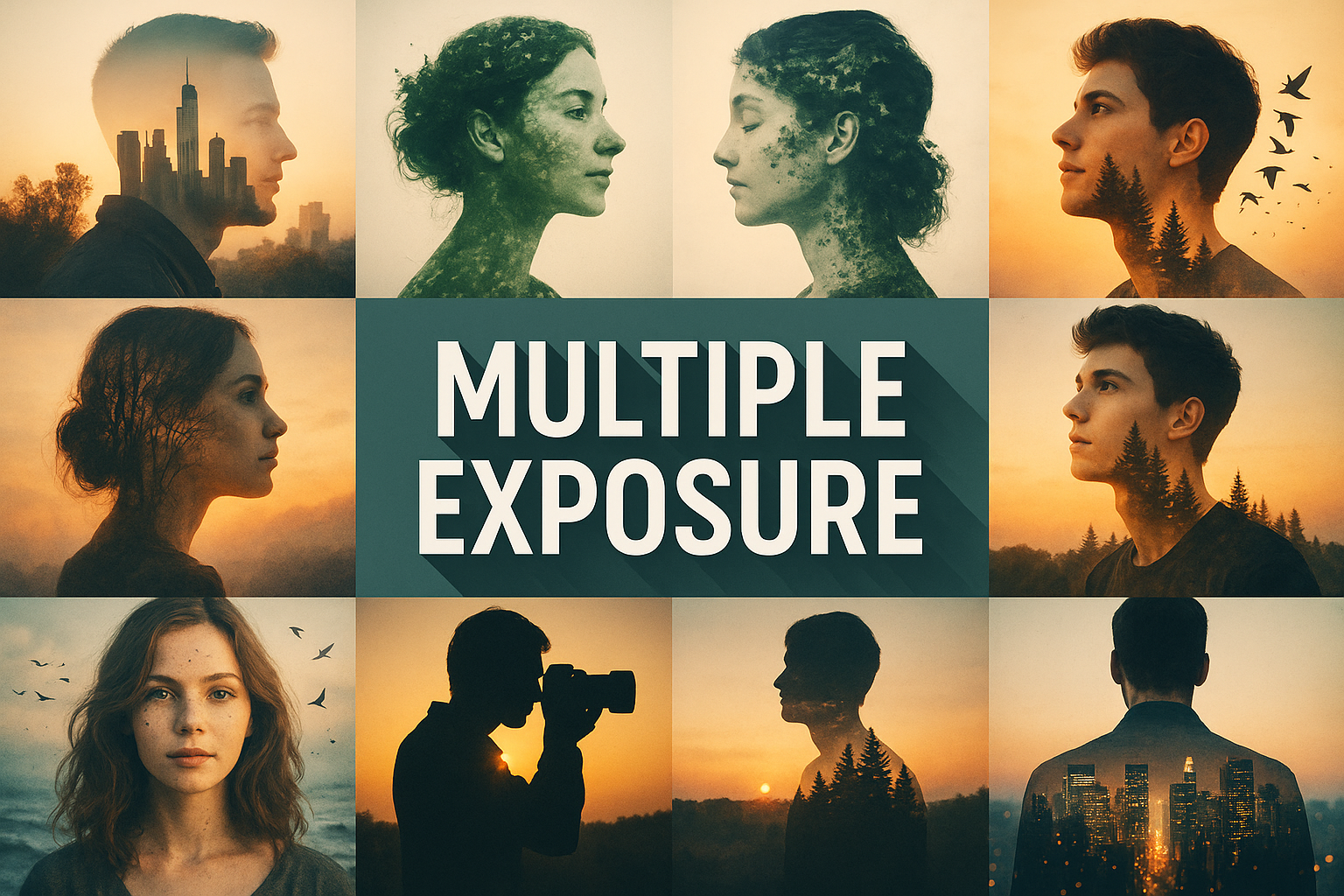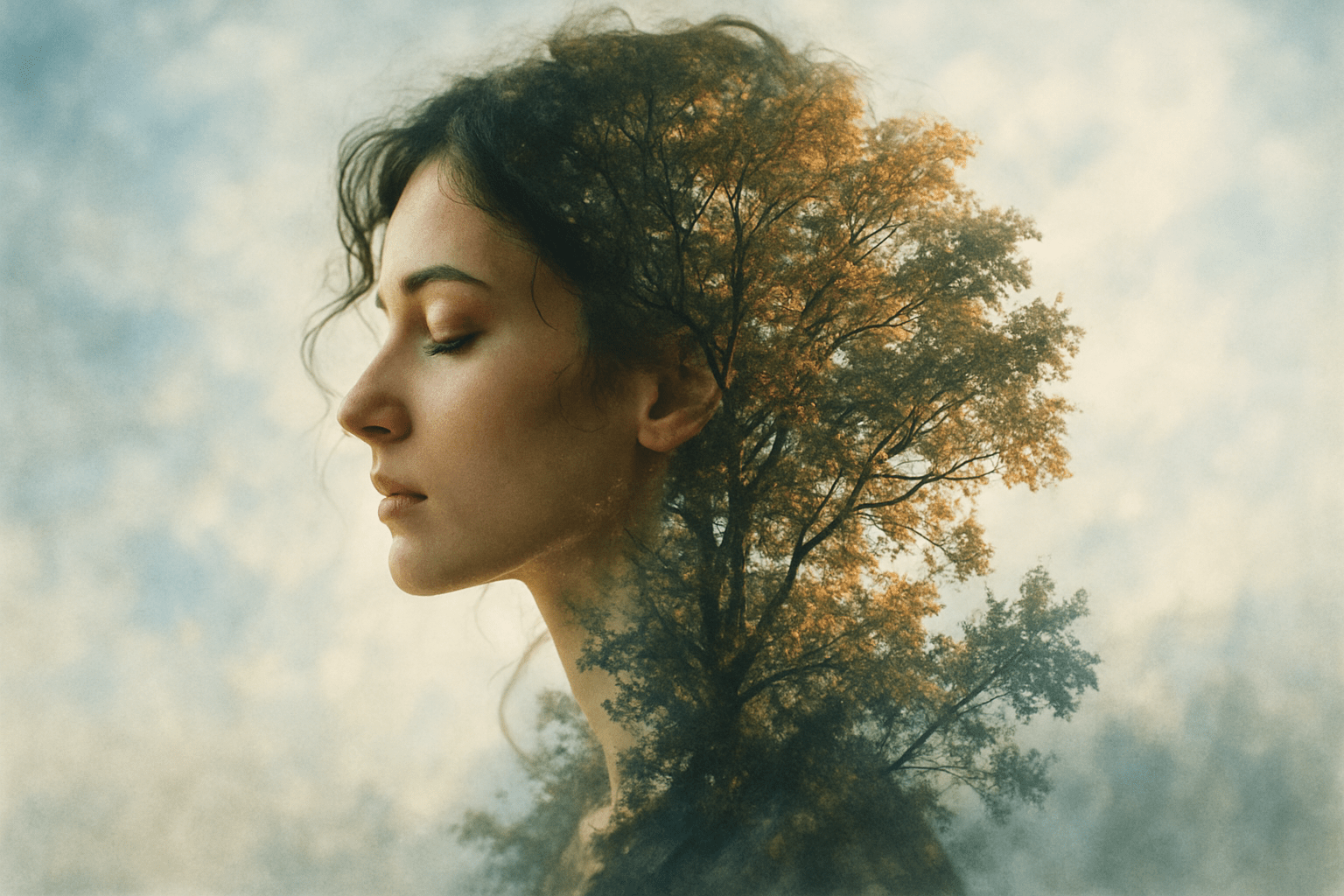
Multiple Exposure
Multiple exposure is a technique in which the camera shutter is opened more than once to expose the film multiple times. This can be done by either using a manual shutter release, or by setting the camera to take multiple exposures. Multiple exposure can create some interesting visual effects, such as superimposing two images on top of each other, or creating a “ghost” image.
AOI thinking about Multiple Exposure [+_~]-/
Overview and Quickfacts
Multiple exposure is a technique in which the photographer exposes the film multiple times, resulting in a single image with multiple layers. This technique can be used to create a variety of effects, from dreamlike and ethereal images to more abstract compositions. Multiple exposure can be achieved in-camera or in post-processing, and is a popular technique among film and digital photographers alike.
Can understand it also, as:
Multiple Exposure:
1. Simultaneous exposure
2. Multiplexing
3. Overlapping
4. superimposition
Categorize it as:
Impressionism, Modernism
.: Dreaming :.
holds a HAIKU for the art style
:. Thought is power .:
Detailed Description
Multiple exposure is a technique in which the camera shutter is opened more than once to expose the film multiple times. This can be done with digital cameras by using the ÃÂÃÂmultiple exposureÃÂàmode, or by manually opening and closing the shutter while taking the picture. The effect of multiple exposure is often used to create surreal or dreamlike images, as well as to add extra depth to an image. It can also be used to create interesting abstractions. Multiple exposure was first used in photography in the late 1800s, and became popular in the early 20th century. Early examples of multiple exposure were often created by accident, when the photographer forgot to wind the film after taking the first exposure. Nowadays, multiple exposure is often used as an artistic technique, and there are many ways to create interesting and unique images using this method. Some famous photographers who have used multiple exposure include Man Ray, LÃÂászlÃÂó Moholy-Nagy, and RenÃÂé Magritte.
.. beep, beep, beep ..
<START OF TRANSMISSION>
1. Multiple exposure is a technique in which two or more images are superimposed to create a single image. 2. Multiple exposure can be used to create a variety of effects, including ghosting, double exposure, and layering. 3. Multiple exposure is often used in photography to create a sense of depth or to add visual interest. 4. Multiple exposure can also be used in film and video to create special effects. 5. Multiple exposure is created by exposing the film or image sensor to light more than once. 6. The first exposure is typically for the main subject, while subsequent exposures are for the background or other elements. 7. Multiple exposure can be achieved in-camera or in post-processing. 8. In-camera multiple exposure is created by setting the camera to expose the film or image sensor multiple times. 9. Post-processing multiple exposure is created by combining two or more images in an image editing program. 10. Multiple exposure can be used to create a variety of effects, including ghosting, double exposure, and layering. 11. Ghosting is created when the main subject is exposed more than once, resulting in a semi-transparent image. 12. Double exposure is created when the main subject and background are exposed at the same time, resulting in a superimposed image. 13. Layering is created when multiple images are superimposed on top of each other, resulting in a multi-layered image. 14. Multiple exposure can be used to create a sense of depth or to add visual interest. 15. Multiple exposure can also be used in film and video to create special effects. 16. Multiple exposure is created by exposing the film or image sensor to light more than once. 17. The first exposure is typically for the main subject, while subsequent exposures are for the background or other elements. 18. Multiple exposure can be achieved in-camera or in post-processing. 19. In-camera multiple exposure is created by setting the camera to expose the film or image sensor multiple times. 20. Post-processing multiple exposure is created by combining two or more images in an image editing program.
<EOF>
.. robbel bob
Visual Examples from our image gallery
Coming soon, we are so slow .. might never come
Artists, Paintings, and more
(be aware, can be highly speculative)
Artists (be aware, speculation possible):
1. William Henry Fox Talbot (1800-1877) 2. Eadweard Muybridge (1830-1904) 3. David Hockney (b. 1937) 4. John Stezaker (b. 1949) 5. Robert Heinecken (1931-2006) 6. Ray K. Metzker (1931-2014) 7. Barbara Kasten (b. 1936) 8. Nancy Graves (1940-1995) 9. Jerry Uelsmann (b. 1934) 10. Joel-Peter Witkin (b. 1939) 11. Duane Michals (b. 1932) 12. Sally Mann (b. 1951) 13. Lyle Ashton Harris (b. 1965) 14. Carrie Mae Weems (b. 1953) 15. James Welling (b. 1951) 16. Thomas Ruff (b. 1958) 17. John Baldessari (b. 1931) 18. Richard Avedon (1923-2004) 19. William Wegman (b. 1942) 20. Cindy Sherman (b. 1954) 21. Andy Warhol (1928-1987) 22. Gerhard Richter (b. 1932) 23. Jeff Wall (b. 1946) 24. Ed Ruscha (b. 1937) 25. Bruce Nauman (b. 1941) 26. Marcel Duchamp (1887-1968) 27. Dara Birnbaum (b. 1946) 28. Joan Jonas (b. 1936) 29. Yoko Ono (b. 1933) 30. Nam June Paik (1932-2006)
Artworks (be aware, speculation possible)
1. William H. Johnson – “Multiple Exposure” (1938) 2. Edward Hopper – “Nighthawks” (1942) 3. Jackson Pollock – “Number 1A” (1948) 4. Mark Rothko – “No. 61 (Rust and Blue)” (1953) 5. Willem de Kooning – “Woman I” (1952-1953) 6. Jasper Johns – “Flag” (1954-1955) 7. Robert Rauschenberg – “Bed” (1955) 8. Yoko Ono – “Cut Piece” (1964) 9. Andy Warhol – “Double Elvis” (1963) 10. Roy Lichtenstein – “Whaam!” (1963) 11. James Rosenquist – “F-111” (1964-1965) 12. David Hockney – “A Bigger Splash” (1967) 13. Richard Hamilton – “Just What Is It That Makes Today’s Homes So Different, So Appealing?” (1966) 14. Ed Ruscha – “Standard” (1967) 15. Bruce Nauman – “Fountain” (1967) 16. John Baldessari – “I Will Not Make Any More Boring Art” (1971) 17. Marcel Duchamp – “Fountain” (1917/1964) 18. Joseph Beuys – “Felt Suit” (1970) 19. Richard Long – “A Line Made by Walking” (1967) 20. Gilbert & George – “The Singing Sculpture” (1969) 21. Hans Haacke – “Shapolsky et al. Manhattan Real Estate Holdings, a Real-Time Social System, as of May 1, 1971” (1971) 22. Vito Acconci – “Seedbed” (1972) 23. Chris Burden – “Shoot” (1971) 24. Dennis Oppenheim – “Reading Position for Second Degree Burn” (1970) 25. Lawrence Weiner – “A Statement of Intent” (1968) 26. Robert Smithson – “Spiral Jetty” (1970) 27. Gordon Matta-Clark – “Splitting” (1974) 28. Dan Flavin – “monument” for V. Tatlin (1964) 29. Donald Judd – “Untitled” (1969) 30. John Cage – “4’33″” (1952)
Epoch
Multiple exposure is a technique in which two or more images are superimposed to create a single image. This technique can be used to create a variety of effects, including ghostly images, double exposures, and surrealistic images. The time period of the art style Multiple Exposure is the late 19th century to the present day.
AI ART RESSOURCES (AKA, well Tools)
Helping tools -> predefined search links on other pages:











